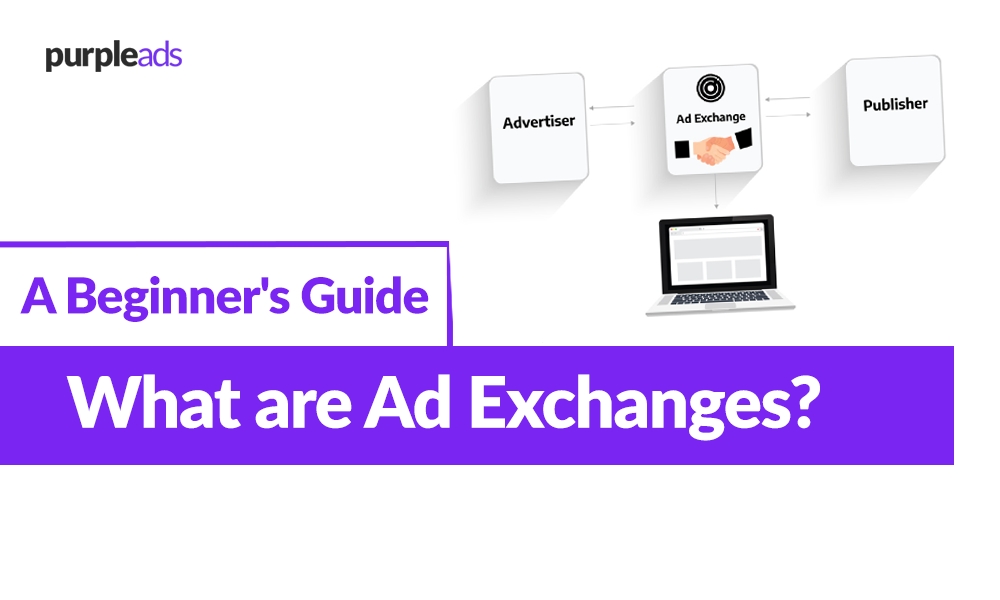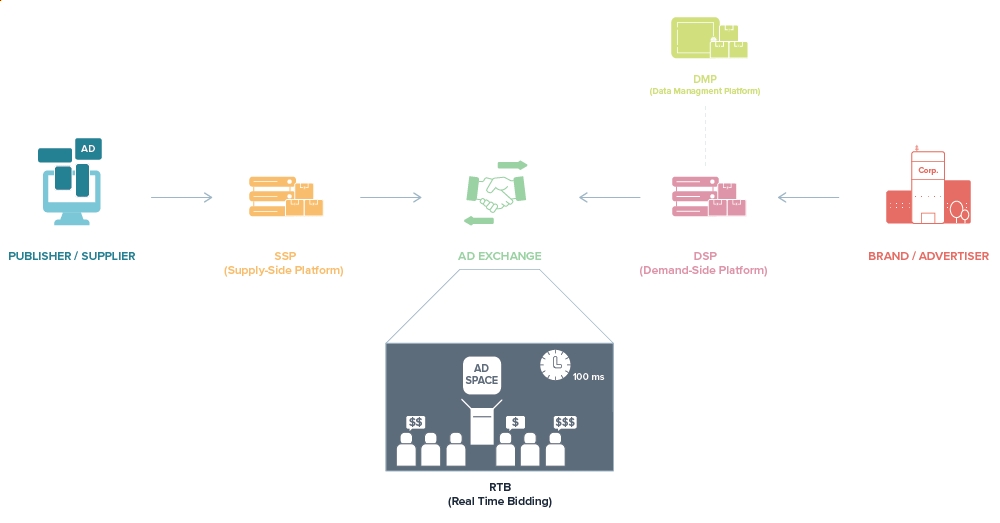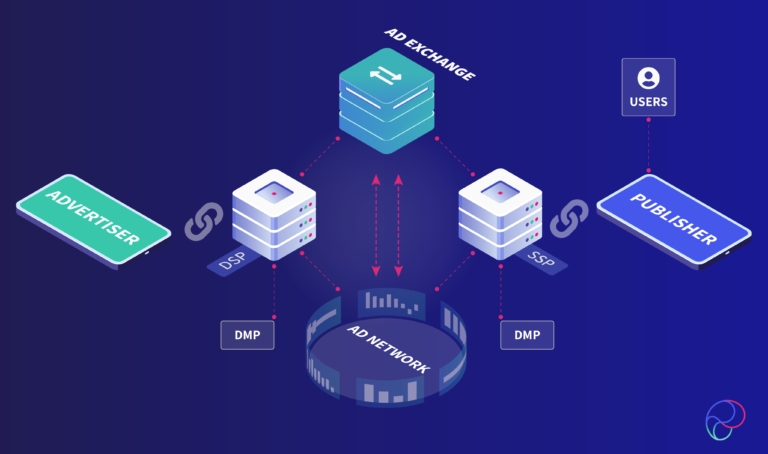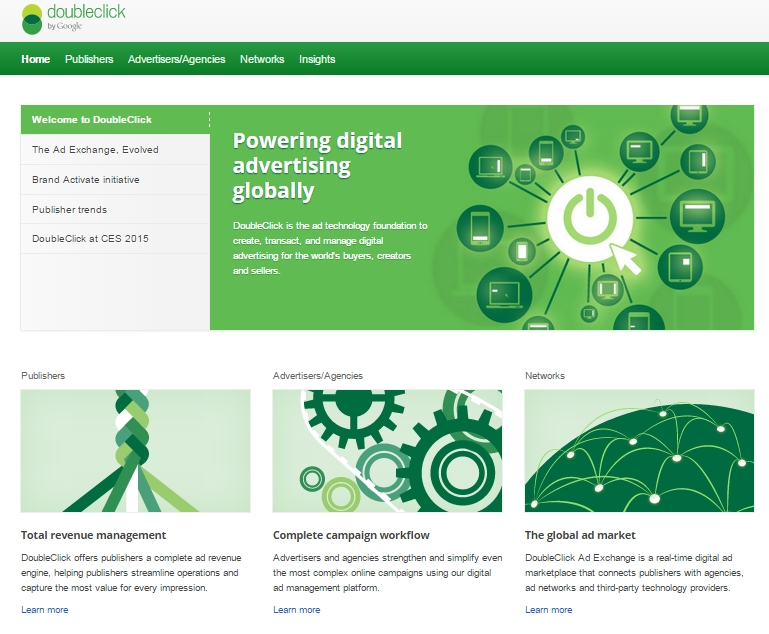Everything You Need to Know About Ad Exchanges in Digital Advertising
Buy CPC Traffic | Buy Display Ads | Exclusive traffic sources | Buy Push Ads | Popunder ADS | Buy Native Ads | Buy Preroll Ads

Buy CPC Traffic | Buy Display Ads | Exclusive traffic sources | Buy Push Ads | Popunder ADS | Buy Native Ads | Buy Preroll Ads
As the world becomes increasingly digitalized, the advertising industry has undergone a significant transformation. Gone are the days of traditional advertising channels such as TV, radio, and print media. In their place, digital advertising has emerged as the most effective and efficient way for brands to reach their target audience. At the heart of this digital revolution lies ad exchanges, which play a crucial role in connecting advertisers with publishers and facilitating the buying and selling of ad inventory.
Ad exchanges, often referred to as virtual marketplaces, have revolutionized the way advertisers buy and sell ads. They act as intermediaries, bringing together advertisers who want to reach a specific audience with publishers who have the inventory to accommodate these ads. Through ad exchanges, advertisers can reach a wider audience, gain access to a vast array of websites and apps, and target their ads more effectively.
One of the key advantages of ad exchanges is their ability to leverage technology and data to make the ad buying process more efficient. Ad exchanges use programmatic advertising techniques, which involve the automated buying and selling of ad impressions in real-time using algorithms. This allows advertisers to target their ads to specific demographics, interests, and behaviors, ensuring that their message reaches the right people at the right time.
Furthermore, ad exchanges enable advertisers to optimize their campaigns in real-time by providing them with detailed performance metrics. Advertisers can track the effectiveness of their ads and make adjustments on the fly, ensuring that they get the best return on their investment. This level of data-driven decision-making is unparalleled in traditional advertising channels and has revolutionized the way brands approach their advertising strategies.
In conclusion, ad exchanges have become an integral part of the digital advertising landscape. They have transformed the way ads are bought and sold, allowing advertisers to reach a wider audience, target their ads more effectively, and optimize their campaigns in real-time. As technology continues to advance, it is clear that ad exchanges will continue to play a vital role in the ever-evolving world of digital advertising.
Understanding Ad Exchanges

An ad exchange is a digital marketplace that connects advertisers with publishers to facilitate the buying and selling of online advertising space. It operates in a similar way to a stock exchange, but instead of trading stocks, it facilitates the trading of digital ad inventory.
In an ad exchange, publishers list their available ad inventory and set the price at which they are willing to sell it. Advertisers, on the other hand, specify their targeting criteria and bid for the ad space. The ad exchange then matches the highest bidder with the available ad inventory and delivers the winning ad to the publisher's website or app.
Ad exchanges simplify the process of buying and selling digital advertising by providing a centralized platform where advertisers can reach their target audience and publishers can monetize their online content. They offer various ad formats, including display ads, video ads, native ads, and more.
One popular type of ad format is push ads. Push ads are a highly effective advertising format that allows advertisers to send notifications directly to users' devices, whether they are using a website or a mobile app. These ads are non-intrusive and can be delivered even when users are not actively browsing the internet, making them a powerful tool for marketers.
Ad exchanges also employ real-time bidding (RTB) technology, which enables advertisers to bid for ad placements in real-time. This means that advertisers can adjust their bids and targeting parameters based on factors such as the user's demographics, browsing behavior, and interests. RTB allows for efficient and effective ad targeting, as advertisers can reach the right audience at the right time.
Overall, ad exchanges play a critical role in the digital advertising ecosystem, connecting advertisers with publishers and enabling efficient and targeted ad placements. They provide transparency, scalability, and flexibility to both advertisers and publishers, making them an essential tool for businesses looking to expand their online presence and reach their target audience effectively.
Benefits of Ad Exchanges for Advertisers

Increased reach: Ad exchanges provide access to a vast network of publishers, allowing advertisers to reach a large audience across various websites, mobile apps, and other digital platforms. This increased reach helps to maximize the visibility and exposure of advertising campaigns.
Targeted audience: Ad exchanges offer advanced targeting capabilities, allowing advertisers to reach their specific target audience based on demographics, interests, browsing behavior, and other criteria. This targeting ability helps advertisers deliver highly relevant and personalized ads, increasing the chances of engagement and conversions.
Real-time bidding: Ad exchanges facilitate real-time bidding (RTB), enabling advertisers to bid for ad inventory in real-time. This auction-based model allows advertisers to optimize their ad spend by targeting the most relevant and valuable impressions, ensuring that their ads are displayed to the right users at the right time.
Cost-effective: Ad exchanges often provide cost-effective advertising solutions, as advertisers can set their bids based on their budget and desired return on investment (ROI). Advertisers have the flexibility to adjust their bids and allocate their budget to the most effective channels, ensuring that they get the most out of their advertising budget.
Data-driven insights: Ad exchanges provide advertisers with valuable data and insights, including performance metrics and audience analytics. This data can help advertisers measure the effectiveness of their campaigns, optimize their targeting strategies, and make data-driven decisions for future advertising efforts.
Transparency: Ad exchanges promote transparency by providing advertisers with detailed information about the ad inventory they are purchasing, including the website or app where the ad will be displayed and the context in which it will appear. This transparency helps advertisers make informed decisions and ensures that their ads are being displayed in brand-safe environments.
Flexibility and control: Ad exchanges give advertisers greater control over their ad campaigns, allowing them to set their targeting parameters, ad preferences, and budget limits. This flexibility enables advertisers to tailor their campaigns to their specific goals and make real-time adjustments based on performance and market trends.
Integration with other marketing channels: Ad exchanges can be integrated with other marketing channels, such as programmatic advertising platforms, social media advertising, and email marketing. This integration allows advertisers to create cohesive marketing strategies that reach their audience across multiple channels, maximizing the overall impact of their advertising efforts.
Overall, ad exchanges offer numerous benefits for advertisers, including increased reach, targeted audience reach, real-time bidding, cost-effective solutions, data-driven insights, transparency, flexibility and control, and integration with other marketing channels. Advertisers can leverage these benefits to optimize their advertising campaigns and achieve their marketing objectives.
Benefits of Ad Exchanges for Publishers

Ad exchanges offer several significant benefits for publishers, making them an essential component of the digital advertising ecosystem. Here are some key advantages:
By participating in ad exchanges, publishers have access to a vast network of advertisers and bidding systems. This allows them to maximize their revenue potential by attracting more advertisers and increasing competition for their ad inventory.
2.
Efficient Monetization:
Ad exchanges use real-time bidding (RTB) technology, enabling publishers to sell their ad impressions in real-time. This ensures more efficient monetization of their inventory, as it eliminates the need for direct negotiation with individual advertisers and simplifies the process.
3.
Access to a Variety of Demand Sources:
Ad exchanges provide publishers with access to a diverse range of demand sources, including ad networks, agencies, and direct advertisers. This broadens their reach and increases the chances of filling their ad inventory, resulting in higher overall ad revenue.
4.
Targeted Ad Placement:
Ad exchanges offer advanced targeting capabilities, allowing publishers to deliver relevant ads to their audience. This improves user experience and engagement, ultimately leading to higher click-through rates and increased ad revenue.
5.
Control Over Ad Inventory:
Publishers have complete control over their ad inventory on ad exchanges. They can set floor prices, prioritize certain advertisers, and choose which types of ads to accept. This flexibility ensures that publishers maintain a level of control while still benefiting from the automated nature of ad exchanges.
6.
Data Insights and Reporting:
Ad exchanges provide publishers with detailed data insights and reporting, allowing them to analyze performance metrics and optimize their ad inventory. This helps publishers make informed decisions to enhance their revenue generation and improve their overall advertising strategy.
In conclusion, ad exchanges offer numerous benefits for publishers, including increased revenue opportunities, efficient monetization, access to a variety of demand sources, targeted ad placement, control over ad inventory, and data insights and reporting. By leveraging these advantages, publishers can optimize their digital advertising efforts and maximize their ad revenue.
Programmatic Advertising and Ad Exchanges

Programmatic advertising refers to the automated buying and selling of online advertising through the use of technology and algorithms. It allows advertisers to reach their intended audience in a more efficient and targeted manner, while also helping publishers optimize their ad inventory and maximize revenue.
Ad exchanges play a crucial role in programmatic advertising. They act as intermediaries between advertisers and publishers, facilitating the buying and selling of ad inventory in real-time auctions. Ad exchanges provide a centralized marketplace where advertisers can bid on available ad impressions, and publishers can sell their inventory to the highest bidder.
One of the key advantages of programmatic advertising and ad exchanges is the ability to target specific audiences with precision. Advertisers can leverage data and insights to create more personalized and relevant ad campaigns, delivering the right message to the right person at the right time. This level of targeting improves the effectiveness and efficiency of advertising, resulting in higher conversion rates and return on investment.
Ad exchanges also enable advertisers to access a wide range of inventory across various websites and media channels. Through programmatic advertising, advertisers can easily reach their target audience across multiple platforms, including websites, mobile apps, social media, and connected devices. This allows for more comprehensive and integrated advertising campaigns, increasing brand visibility and reach.
Furthermore, programmatic advertising and ad exchanges offer transparency and control for both advertisers and publishers. Advertisers have full visibility into their ad placements, ensuring their ads are displayed in brand-safe and high-quality environments. Publishers, on the other hand, have the ability to set floor prices and control the types of ads they want to display on their websites.
In conclusion, programmatic advertising and ad exchanges have revolutionized the digital advertising industry. They have simplified the buying and selling process, improved targeting capabilities, expanded inventory options, and provided transparency and control for advertisers and publishers. As technology continues to advance, programmatic advertising and ad exchanges will likely play an even larger role in the future of digital advertising.
The Future of Ad Exchanges in Digital Advertising

As digital advertising continues to evolve, the role of ad exchanges is poised to play an even more crucial role in the ecosystem. Ad exchanges, which serve as a marketplace for buying and selling ad inventory, have already transformed the way advertising is bought and distributed online. However, the future holds exciting possibilities for ad exchanges to further enhance targeting, optimize campaigns, and improve the overall effectiveness of digital advertising.
1. Enhanced Targeting

One of the key areas where ad exchanges can make a significant impact is in the realm of targeting. As technology advances and data becomes more abundant, ad exchanges will have access to a wealth of information about consumer behavior, preferences, and demographics. Leveraging this data, ad exchanges will be able to provide advertisers with even more precise targeting options, allowing them to reach their desired audience with greater accuracy. This enhanced targeting capability will result in more relevant and personalized ads, leading to higher engagement and conversion rates.
2. Advanced Optimization

Ad exchanges will also continue to innovate in terms of campaign optimization. By leveraging machine learning algorithms and real-time analytics, ad exchanges will be able to automatically optimize campaigns in real-time. This means that ads can be dynamically adjusted and displayed based on user behavior, ensuring that advertisers are bidding on the most relevant and valuable inventory. This advanced optimization will result in improved ad performance and higher return on investment for advertisers.
Furthermore, ad exchanges will likely incorporate more sophisticated targeting parameters, such as contextual targeting and behavioral targeting, to further refine campaign optimization. This will enable advertisers to not only reach the right audience but also deliver the right message at the right time, further increasing the effectiveness of their advertising efforts.
The future of ad exchanges in digital advertising is bright and full of potential. With enhanced targeting capabilities and advanced optimization techniques, ad exchanges will continue to shape the digital advertising landscape, providing advertisers with more effective and efficient ways to reach their target audience. As technology continues to advance, it's exciting to envision the possibilities that lie ahead for ad exchanges and their role in the ever-evolving digital advertising industry.
What are ad exchanges?
Ad exchanges are digital platforms that connect advertisers and publishers to buy and sell ad inventory in real-time through a bidding process.
How do ad exchanges work?
Ad exchanges work by automating the buying and selling of ad inventory through real-time bidding. Advertisers submit their ads and bid on available ad placements, and publishers make their inventory available for auction. The highest bidder wins the auction and their ad is displayed on the publisher's website.
What are the benefits of using ad exchanges?
Using ad exchanges provides several benefits, such as increased efficiency, transparency, and cost-effectiveness in buying and selling ad inventory. Advertisers have access to a wide range of publishers and can target specific audiences, while publishers can maximize their revenue by selling their ad inventory to the highest bidder.
Are there any risks involved in using ad exchanges?
There are some risks associated with using ad exchanges. One of the main concerns is ad fraud, where advertisers may unknowingly serve their ads on low-quality websites or to non-human traffic. Advertisers should carefully monitor and analyze their ad placements to ensure they are reaching their desired audience and not wasting their ad budget.
How can advertisers optimize their use of ad exchanges?
Advertisers can optimize their use of ad exchanges by using data-driven strategies. They can analyze audience demographics, behavior, and preferences to target their ads more effectively. Additionally, advertisers should regularly monitor and optimize their ad campaigns to ensure they are achieving their desired results.
What is the role of ad exchanges in digital advertising?
Ad exchanges play a crucial role in digital advertising by facilitating the buying and selling of ad inventory in real time through an auction-based marketplace. They connect advertisers and publishers, allowing advertisers to bid on available ad impressions based on audience targeting and other criteria. This enables efficient and targeted ad placements, maximizing the value for both advertisers and publishers.
How do ad exchanges work?
Ad exchanges work by creating a marketplace where advertisers and publishers can buy and sell ad inventory in real time. When a user visits a website or app, information about that user is sent to the ad exchange. Advertisers then place bids for that ad impression based on their targeting preferences and budget. The ad exchange selects the highest bidder, and their ad is instantly displayed to the user. This entire process happens in milliseconds, allowing for quick and efficient ad placements.
Buy CPC Traffic | Buy Display Ads | Exclusive traffic sources | Buy Push Ads | Popunder ADS | Buy Native Ads | Buy Preroll Ads
2022-2024 @ The Role of Ad Exchanges in Digital Advertising: A Comprehensive Overview